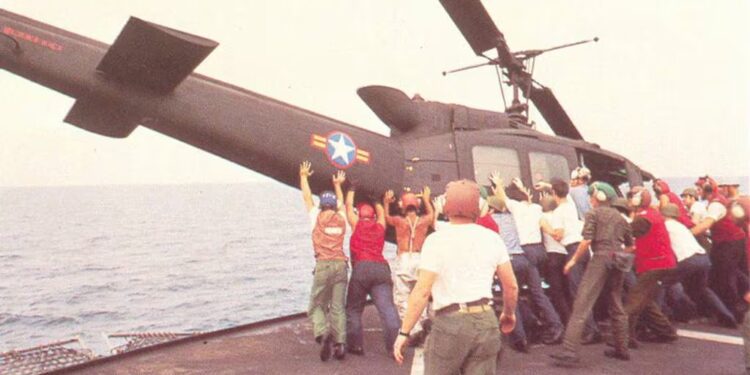The evacuation of US troops from Saigon in 1973 marked the denouement of one of the most controversial and divisive conflicts in modern history: the Vietnam War. After decades of turmoil, bloodshed, and geopolitical maneuvering, the withdrawal of American forces signaled the culmination of a failed military intervention and a bitter defeat for the United States.
The Vietnam War, which officially commenced in the early 1960s and lasted until 1975, was deeply rooted in Cold War politics and the US policy of containment against communist expansionism. The conflict pitted the communist forces of North Vietnam and the Viet Cong insurgents in the South against the US-backed government of South Vietnam. What began as a limited intervention gradually escalated into a full-scale military campaign, characterized by extensive aerial bombings, ground operations, and widespread deployment of troops.
By the early 1970s, public sentiment in the United States had turned decisively against the war. The staggering cost in human lives, economic resources, and the lack of a clear path to victory fueled growing opposition and anti-war protests at home. The Nixon administration, seeking an honorable exit strategy, pursued a policy of Vietnamization, gradually transferring combat responsibilities to the South Vietnamese while simultaneously negotiating a peace agreement with North Vietnam.
The Paris Peace Accords of 1973 represented a diplomatic breakthrough, providing for a ceasefire and the withdrawal of US military forces from Vietnam. Under the terms of the agreement, American troops were to be gradually withdrawn, and prisoners of war on both sides were to be released. However, the peace proved elusive, as fighting continued between North and South Vietnam, violating the spirit of the ceasefire.
Against this backdrop, the evacuation of US troops from Saigon in 1973 took on heightened significance. As the last remaining American personnel departed, the evacuation marked the end of direct US involvement in the conflict. The fall of Saigon, which would occur two years later in 1975, represented the final collapse of South Vietnam and the ultimate victory of the communist forces.
The evacuation itself was a chaotic and dramatic affair, captured in iconic images broadcast around the world. Helicopters ferried evacuees from the rooftops of embassy buildings, desperate crowds clamored to board departing aircraft, and scenes of panic and confusion unfolded on the streets below. For many, the scenes of the evacuation encapsulated the futility and tragedy of the Vietnam War—a superpower brought to its knees by a determined insurgency in a distant land.
The aftermath of the Vietnam War was profound and far-reaching, with consequences that reverberated for decades to come. The conflict left a deep scar on the American psyche, prompting soul-searching and questioning of US foreign policy. The Vietnam Syndrome, characterized by reluctance to engage in military interventions abroad, shaped American foreign policy for years afterward.
Moreover, the war had devastating consequences for the Vietnamese people, with millions killed, wounded, or displaced by the conflict. The country was left divided and ravaged by war, grappling with the challenges of reconstruction and reconciliation in the aftermath of such immense suffering.
In hindsight, the evacuation of US troops from Saigon in 1973 represented not only the end of a military intervention but also the beginning of a reckoning with the limits of American power and the complexities of modern warfare. It was a watershed moment that laid bare the hubris and miscalculations that had led the United States into a quagmire from which it would struggle to extricate itself.
newshub



Recent Comments